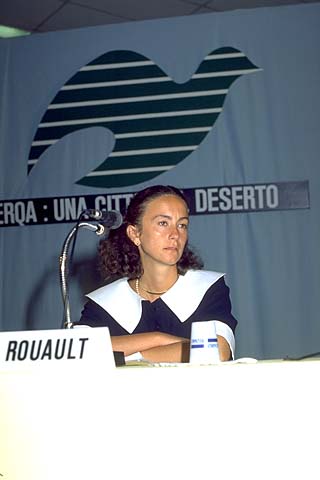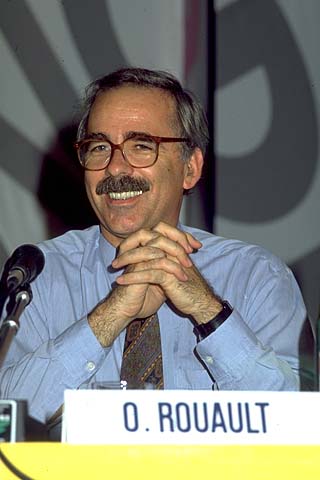Terqa: a city and the desert
‘Ancient Terqa is located in the heart of the mid-Euphrates, on the right of the river, just a few kilometres from where its meets the Khabur. Now known as tell el-Ashara, it is still inhabited today. The “modern” town is built over the ruins of the old, in an eleva-ted position, and still possesses a long section of the ancient dried-brick walls (3rd millennium) overlooking the river. Excava-tions are restricted mainly to the uninhabited areas. The site was first heard of in 1910 when a German scholar, E. Hertzfeld, who was passing through Ashara, came across a cuneiform tablet bearing details of the construction of a temple to the god Dagan, together with name of the city, “Ter-qa” (in Ak-kadian). In 1923, two French scholars, F. Thureau Dangin and P. Dhorme, reached Terqa and, in just five days and with a limited number of workmen, dug down to the 3rd millennium layer. Only a few years later, a large number of ta-blets were discovered at Mari bearing the letters of the governor of Terqa to the king of Ma-ri. In 1948 an important Assyrian-Aramaic stele dating back to the 8th cent. B. C. was found at Terqa. Systematic digs began in 1974 with the international expedition directed by Prof. Giorgio Buccellati, with the support of the Uni-versities of California and Los Angeles, of the John Hopkins University, of the French CNRS, of the College de France and of the University of Rome. A few years ago the excavations pas-sed under the direction of O. Rouault, professor of Assyriolo-gy at the College de France who took part in the expedition from the very beginning as epigra-phist. The exhibition presents first of all three models illustrating three courses of the Euphrates that have had a marked influen-ce on the settlement of the Me-sopotamian populations. It then passes on to provide an ample documentation, by means of photographs and written texts, of the results of the excavations carried out at Terqa. This docu-mentation covers five separate periods. The first three, of a hi-storical nature, are dedicated re-spectively to the 3rd, 2nd and 1st millennium B.C.. The great walls of Terqa and several tombs date back to the 3rd millennium; the temple of the goddess NinKarrak, the archive dwelling of Puzurum and the scribes quarter date back to the 2nd millennium, while the Aramaic tombs and the great nomad market centre belong to the 1st millennium. The fourth section of the second part of the exhibition illustrates the relationship between the nomads and the city of Terqa. The fifth is dedicated to cunei-form writing. Finally, the exhibition presents about 30 artifacts of exceptional historical and artistic value on loan from the Louvre. Some of these were found at Terqa, others at Mari (an equally impor-tant Mesopotamian site not far from Terqa). The terra-cotta mo-del of a divination liver used in the ancient Mesopotamian priests’ schools and the statue of a local prince in prayer come from Mari. The Terqa artifacts include beautifully crafted neck-laces and bracelets dating to the 3rd and 2nd millennium. A special exhibition catalogue has been prepared for the occa-sion.’






